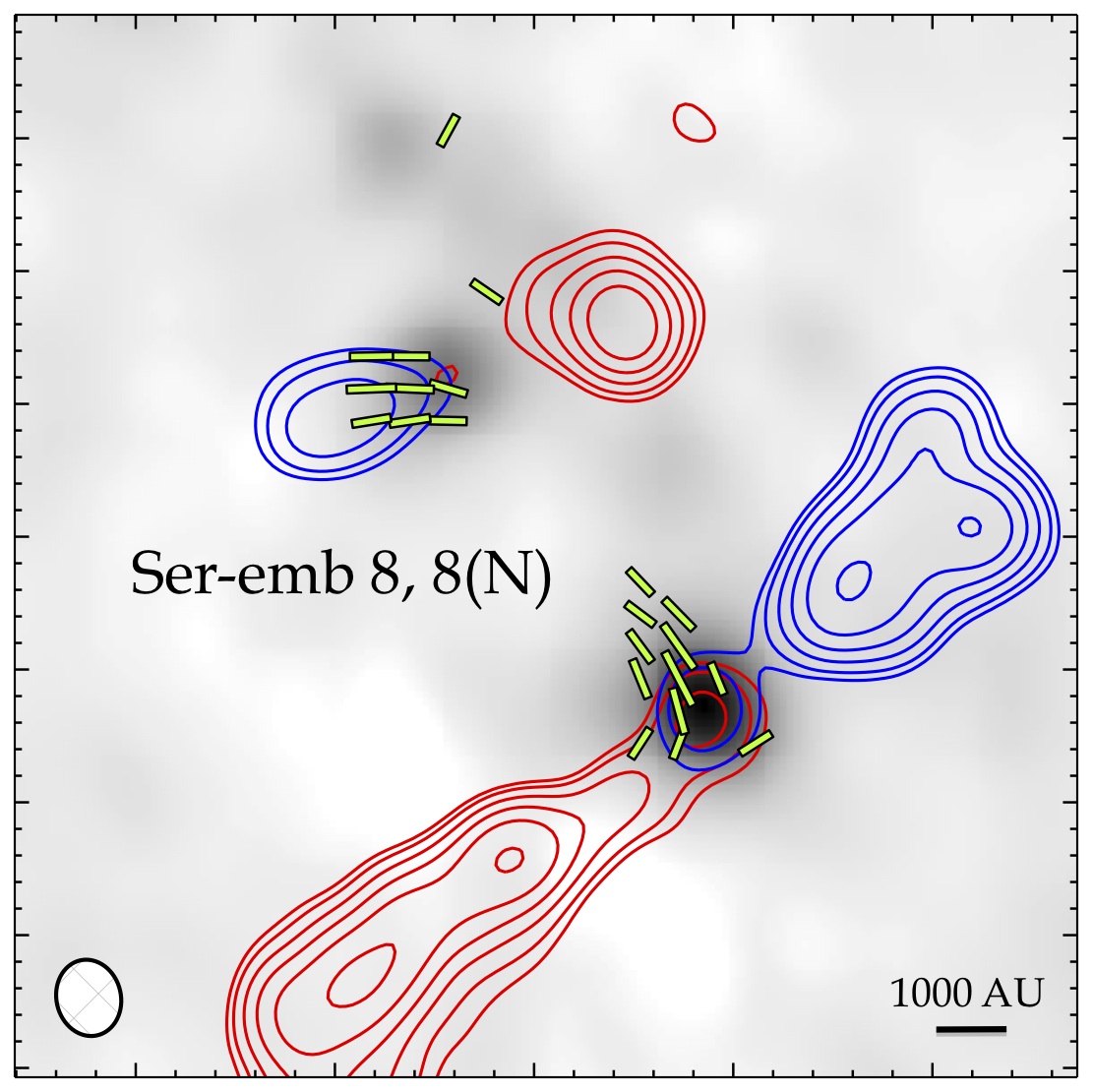| EPoS Contribution |
|
From clouds to cores to envelopes to disks: a multi-scale view of magnetized star formation
Chat Hull UCB, Berkeley, US | |
| Magnetic fields are thought to play an important role in the formation of stars. However, that importance has been called into question by previous observations showing misalignment between protostellar outflows and magnetic fields (B-fields), as well as inconsistency in B-field morphology between 10,000 AU and 1,000 AU scales. To investigate these inconsistencies, we used the 1.3 millimeter full-Stokes polarimeter at CARMA to map dust polarization with ~2.5" resolution toward 29 star-forming cores and 8 high-mass star-forming regions as part of the TADPOL survey. We find that a subset of the sources have consistent B-field orientations between the large scales measured by single-dish submillimeter telescopes (with ~20" resolution) and the small scales measured by CARMA. Those same sources also tend to have higher fractional polarizations than the sources with inconsistent large-to-small-scale fields, possibly because there is less twisting of the B-fields to reduce the polarization fraction. This suggests that in at least some sources, the B-fields play a role in regulating the infall of material over many orders of magnitude, all the way down to ~1000 AU protostellar envelope scales. However, even in the sources that seem to have retained the memory of the global B-field direction, the fields in the cores are misaligned with the disks and outflows in the central protostars -- a key previous result of the TADPOL survey. Furthermore, the protostellar cores with lower polarization fractions tend to have B-fields that are preferentially perpendicular to outflows, which suggests that in these sources the B-fields have lost the memory of the larger-scale global field and have been wrapped up by envelope rotation. We have proposed to observe a subset of TADPOL sources with ~100 AU resolution using the newly commissionined ALMA polarimeter, which will allow us to characterize the B-field morphologies across yet another order of magnitude in scale; probing B-fields where the envelope meets the disk in the youngest protostars will have profound implications for both disk- and planet-formation theories. | |
 | |
| Caption: A map of the Class 0 protostellar cores Ser-emb 8 and 8(N) from the TADPOL survey (Hull et al. 2013b). The line segments show the inferred magnetic field orientations. The grayscale is proportional to the total intensity dust emission. The blue and red contours show the bipolar outflows, mapped in SiO(5-4). This map highlights the main conclusion from Hull et al (2013a), which is that even when measured at 0.01 pc scales, magnetic fields and outflows are not tightly aligned in protostellar cores. | |
| Collaborators: R. Plambeck, UCB, US The TADPOL collaboration |
Key publication
Suggested Sessions: Magnetic Fields |

